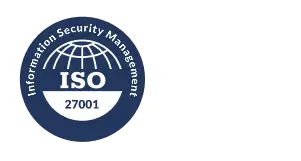Healthcare data analytics software
Improve patient care and streamline operations with HIPAA-compliant AI-fueled data analytics solutions for healthcare.
Partner with the leading healthcare analytics platform

Boost patient and provider experiences while improving care delivery and operational performance across your healthcare systems.
Whether you're managing hospitals, clinics, payer networks, or digital health platforms, partner with the leading healthcare data platform, with over 12 years of experience. Enable AI-powered self-service analytics, intuitive insights, and collaborative data exploration.
Benefits of the GoodData healthcare analytics platform
Track and improve patient outcomes with AI and ML
Utilize our AI Assistant and ML features to monitor and predict patient outcomes. Equip clinicians with real-time clinical data and predictive alerts to ensure early interventions.
- Predictive alerts at point-of-care.
- Automated anomaly detection to flag risk.
- Natural language insights for fast decisions.
Create a unified view of your data
Ensure consistent data understanding across your healthcare organization. Our semantic layer eliminates data silos and provides a single source of truth to ensure every healthcare professional has accurate data insights.
- Unified data definitions understandable by all.
- Self-service analytics for users of all abilities.
- Consistent and reliable medical reporting.
Integrate analytics directly into medical systems
Provide consistent healthcare data insights where and when medical professionals need them most.
- Embed clinical dashboards, visualizations, or NLQ.
- Provide point-of-care analytics directly or via APIs.
- Make healthcare analytics accessible on any device.
Stay compliant with centralized governance
Benefit from flexible deployment options to comply with healthcare industry regulatory standards and data residency. Ensure strict access control with mulitenancy.
- HIPAA compliance with end-to-end encryption.
- Centralized semantic layer and multitenancy.
- Deploy SaaS or self-hosted, on-prem or on cloud.
Key features of GoodData's healthcare analytics tools
Discuss your use case with us
See how GoodData can help with your analytics goals.
Explore our healthcare analytics success stories
Smoothly implement in your ecosystem



Deploy in GoodData Cloud
GoodData Cloud is a SaaS product operated and maintained by us. Customers receive continuous code updates and it can be deployed in AWS, Azure, and multi-region.



Deploy Self-hosted
Self-hosted uses the same codebase as GoodData Cloud and is ideal for users needing enhanced security, governance, or control for data residency or regulatory compliance.





Integration
Open APIs and declarative SDKs — connect to code repositories and 3rd-party apps, embed anywhere.




Security and governance
Trusted analytics — certifications, inherited permissions, and cascading content changes for easy admin.




Accessibility
Accessible analytics — ensuring compliance and delivering inclusive experiences.




















A trusted platform, loved by users






Common healthcare analytics questions
Healthcare analytics transforms clinical, operational, and financial data into actionable insights that drive better patient outcomes, operational efficiency, and regulatory compliance. By leveraging advanced AI and machine learning, healthcare organizations can make data-driven decisions that improve care quality while reducing costs.
Yes, our platform is fully HIPAA-compliant, offering built-in security features such as data encryption, access controls, audit trails, and deployment options that support both cloud and on-premise environments.
Absolutely. Our solution is designed with multi-tenancy in mind, enabling you to serve multiple clinics, providers, or business units securely while maintaining data isolation and governance.
We offer embedded analytics that can be integrated directly into EHRs, patient portals, or custom applications—delivering real-time insights at the point of care or within administrative dashboards.
Popular use cases include revenue cycle optimization, clinical decision support, population health management, patient engagement tracking, and compliance monitoring.























